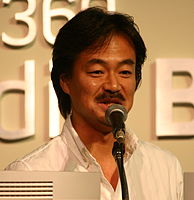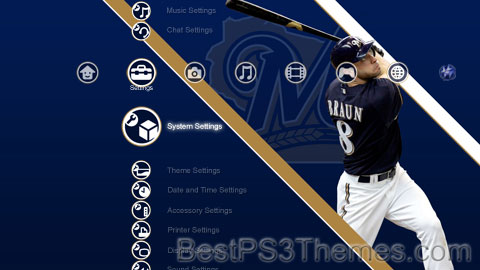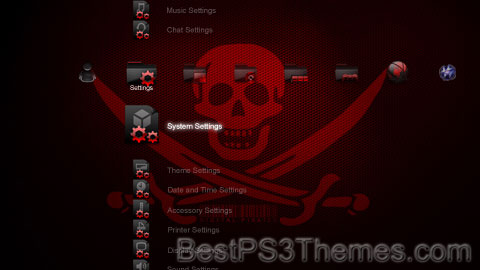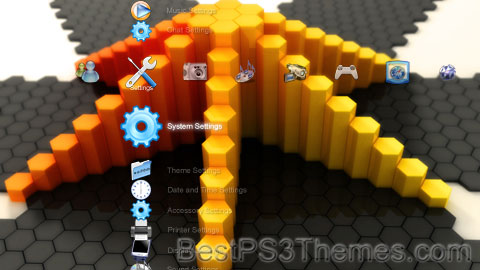Winter Wonderland theme by Rainstorm81
Download: WinterWonderland.p3t
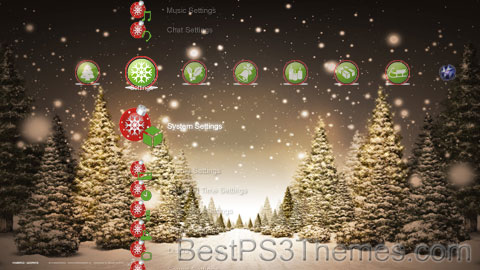
(10 backgrounds)
| "Winter Wonderland" | |
|---|---|
 1934 sheet music cover | |
| Song | |
| Published | 1934 by Bregman, Vocco and Conn |
| Genre | Christmas |
| Composer(s) | Felix Bernard |
| Lyricist(s) | Richard Bernhard Smith |
"Winter Wonderland" is a song written in 1934 by Felix Bernard and lyricist Richard Bernhard Smith. Due to its seasonal theme, it is often regarded as a Christmas song in the Northern Hemisphere. Since its original recording by Richard Himber, it has been covered by over 200 different artists. Its lyrics are about a couple's romance during the winter season.[1]
A later version of "Winter Wonderland" (which was printed in 1947) included a "new children's lyric" that transformed it "from a romantic winter interlude to a seasonal song about playing in the snow". The snowman mentioned in the song's bridge was changed from Parson Brown to a circus clown, and the promises the couple made in the final verse were replaced with lyrics about frolicking. Singers like Johnny Mathis connected both versions, adding a verse and chorus.[2]
History[edit]
Smith, a native of Honesdale, Pennsylvania, was reportedly inspired to write the lyrics after seeing Honesdale's Central Park covered in snow. He wrote the lyrics while being treated for tuberculosis in the West Mountain Sanitarium in Scranton.[3]
The song was originally recorded in 1934 for RCA Victor. At the end of a different recording session by Himber and his Hotel Ritz-Carlton Orchestra, with extra time to spare, RCA Victor suggested arranging and recording "Winter Wonderland" using some additional members of its own orchestra, which included Artie Shaw and other established New York City studio musicians.
Guy Lombardo’s version that same year would go on to be one of the biggest hits of 1934.[citation needed]
In Mathis' version, heard on his 1958 LP Merry Christmas, the introduction is sung between the first and the second refrain.
In 1960, Ella Fitzgerald recorded a jazz arrangement of the song for her Verve release, Ella Wishes You a Swinging Christmas.
The song was included on the 1994 compilation album If Every Day Was Like Christmas by Elvis Presley.[4]
In 1999, Ringo Starr recorded a version of Winter Wonderland on Mercury Records release, I Wanna Be Santa Claus.
In 2023, Chlöe covered the song for Amazon Music as part of their Amazon Original Music series. The cover peaked at number 87 on Billboard Hot 100,[5] making her version of the song the first to enter the chart.[6]
In 2023, Laufey covered the song for Spotify as part of their Spotify Singles Holiday series. The cover became the highest-charting version of the song in Canada, Ireland and the United Kingdom.[7]
Awards and achievements[edit]
Guy Lombardo's version was the highest on the charts at the time of introduction. Johnny Mercer's version of the song placed #4 on the Billboard airplay chart in 1946. The same season, a version by Perry Como hit the retail top ten; Como would re-record the song for his 1959 Christmas album.
In November 2007, the American Society of Composers, Authors and Publishers (ASCAP) listed "Winter Wonderland" as the most-played ASCAP-member-written holiday song of the previous five years, and the Eurythmics' 1987 version as the one most commonly played.[8]
In December 2023, Chlöe's version was the first version to enter the Hot 100 ever and Laufey's version became the highest-charting version of the song in Canada, Ireland and the United Kingdom.
Charts[edit]
Tony Bennett version[edit]
| Chart (1968–2023) | Peak position |
|---|---|
| Australia (ARIA)[9] | 40 |
| Denmark (Tracklisten)[10] | 35 |
| Hungary (Stream Top 40)[11] | 34 |
| Ireland (IRMA)[12] | 69 |
| Italy (FIMI)[13] | 44 |
| Lithuania (AGATA)[14] | 98 |
| Netherlands (Single Top 100)[15] | 55 |
| New Zealand (Recorded Music NZ)[16] | 39 |
| Norway (VG-lista)[17] | 35 |
| Portugal (AFP)[18] | 68 |
| Sweden (Sverigetopplistan)[19] | 42 |
| Switzerland (Schweizer Hitparade)[20] | 64 |
| UK Singles (OCC)[21] | 94 |
| US Holiday 100 (Billboard)[22] | 87 |
Tony Bennett and Lady Gaga version[edit]
| Chart (2014) | Peak position |
|---|---|
| US Holiday Digital Song Sales (Billboard)[23] | 20 |
Bing Crosby version[edit]
| Chart (2017–2022) | Peak position |
|---|---|
| Global 200 (Billboard)[24] | 140 |
| Hungary (Stream Top 40)[25] | 21 |
| US Holiday 100 (Billboard)[26] | 66 |
Michael Bublé version[edit]
| Chart (2017–2023) | Peak position |
|---|---|
| Sweden Heatseeker (Sverigetopplistan)[27] | 13 |
| US Holiday 100 (Billboard)[28] | 93 |
Darlene Love version[edit]
| Chart (2018–2023) | Peak position |
|---|---|
| Global 200 (Billboard)[29] | 102 |
| US Holiday 100 (Billboard)[30] | 31 |
| US Rolling Stone Top 100[31] | 41 |
Chlöe version[edit]
| Chart (2023–2024) | Peak position |
|---|---|
| US Billboard Hot 100[5] | 87 |
| US Holiday 100 (Billboard)[32] | 57 |
| US Hot R&B/Hip-Hop Songs (Billboard)[33] | 19 |
Laufey version[edit]
| Chart (2023–2024) | Peak position |
|---|---|
| Australia (ARIA)[34] | 69 |
| Canada (Canadian Hot 100)[35] | 55 |
| Global 200 (Billboard)[36] | 147 |
| Ireland (IRMA)[37] | 14 |
| Lithuania (AGATA)[38] | 97 |
| New Zealand Hot Singles (RMNZ)[39] | 7 |
| UK Singles (OCC)[40] | 26 |
| UK Independent Singles (OCC)[41] | 3 |
| US Bubbling Under Hot 100 (Billboard)[42] | 2 |
Certifications[edit]
Tony Bennett[edit]
| Region | Certification | Certified units/sales |
|---|---|---|
| Denmark (IFPI Danmark)[43] | Platinum | 90,000‡ |
| United Kingdom (BPI)[44] | Silver | 200,000‡ |
|
‡ Sales+streaming figures based on certification alone. | ||
Michael Bublé[edit]
| Region | Certification | Certified units/sales |
|---|---|---|
| United Kingdom (BPI)[45] | Silver | 200,000‡ |
|
‡ Sales+streaming figures based on certification alone. | ||
Darlene Love[edit]
| Region | Certification | Certified units/sales |
|---|---|---|
| United States (RIAA)[46] | Platinum | 1,000,000‡ |
|
‡ Sales+streaming figures based on certification alone. | ||
References[edit]
- ^ Lankford, Ronald D. (2013). Sleigh Rides Jingle Bells & Silent Nights: A Cultural History of American Christmas Songs. Gainesville, Florida: University Press of Florida. p. 109. ISBN 978-0813044927.
- ^ Lankford, pp. 110-111
- ^ Bonifanti, Terry (December 25, 2014). "Honesdale lyricist wrote 'Wonderland'". The Times-Tribune. Scranton, Pennsylvania. Retrieved January 26, 2020.
- ^ "Elvis Presley - if Every Day Was Like Christmas Album Reviews, Songs & More | AllMusic". AllMusic.
- ^ a b "Billboard Hot 100: Week of January 6, 2024". Billboard. Retrieved January 3, 2024.
- ^ Trust, Gary (December 26, 2023). "Meghan Trainor, Cher & Chloe Bring New Holiday Cheer to the Hot 100". Billboard. Retrieved December 27, 2023.
- ^ "Get Merry With New Spotify Holiday Singles From Laufey, Kirk Franklin, Ezra Collective, and Panter Bélico". Spotify. Archived from the original on May 23, 2024. Retrieved May 24, 2024.
- ^ ASCAP Announced Top 25 Holiday Songs. November 12, 2007
- ^ "Tony Bennett – Winter Wonderland". ARIA Top 50 Singles. Retrieved June 10, 2019.
- ^ "Track Top-40 Uge 52, 2018". Hitlisten. Retrieved June 10, 2019.
- ^ "Archívum – Slágerlisták – MAHASZ" (in Hungarian). Stream Top 40 slágerlista. Magyar Hanglemezkiadók Szövetsége. Retrieved June 10, 2019.
- ^ "Irish-charts.com – Discography Tony Bennett". Irish Singles Chart. Retrieved January 1, 2022.
- ^ "Top Singoli – Classifica settimanale WK 52" (in Italian). Federazione Industria Musicale Italiana. Retrieved December 30, 2023.
- ^ "2023 52-os savaitės klausomiausi (Top 100)" (in Lithuanian). AGATA. December 29, 2023. Retrieved January 4, 2024.
- ^ "Tony Bennett – Winter Wonderland" (in Dutch). Single Top 100. Retrieved December 31, 2021.
- ^ "NZ Top 40 Singles Chart". Recorded Music NZ. December 31, 2018. Retrieved June 10, 2019.
- ^ "VG-lista – Topp 20 Single uke 52, 2019". VG-lista. Retrieved December 28, 2019.
- ^ "Tony Bennett – Winter Wonderland". AFP Top 100 Singles. Retrieved June 10, 2019.
- ^ "Tony Bennett – Winter Wonderland". Singles Top 100. Retrieved June 10, 2019.
- ^ "Tony Bennett – Winter Wonderland". Swiss Singles Chart. Retrieved December 31, 2023.
- ^ "Official Singles Chart Top 100". Official Charts Company. Retrieved June 10, 2019.
- ^ "Tony Bennett Chart History (Holiday 100)". Billboard. Retrieved June 10, 2019.
- ^ "Tony Bennett Chart History (Holiday Digital Song Sales)". Billboard. Retrieved November 12, 2023.
- ^ "Bing Crosby Chart History (Global 200)". Billboard. Retrieved April 12, 2023.
- ^ "Archívum – Slágerlisták – MAHASZ" (in Hungarian). Stream Top 40 slágerlista. Magyar Hanglemezkiadók Szövetsége. Retrieved November 12, 2023.
- ^ "Bing Crosby Chart History (Holiday 100)". Billboard. Retrieved April 12, 2023.
- ^ "Veckolista Heatseeker, vecka 52, 2023". Sverigetopplistan. Retrieved December 30, 2023.
- ^ "Michael Bublé Chart History (Holiday 100)". Billboard. Retrieved December 30, 2023.
- ^ "Darlene Love Chart History (Global 200)". Billboard. Retrieved April 13, 2023.
- ^ "Darlene Love Chart History (Holiday 100)".
Quicksilver
Quicksilver theme by Takary
Download: Quicksilver.p3t
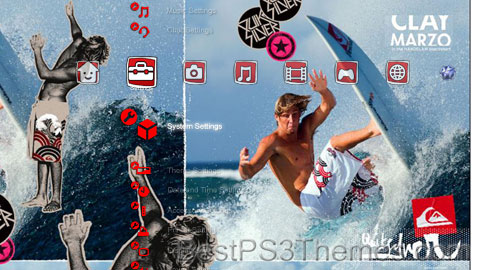
(11 backgrounds HD, 3 SD)
 Look up quicksilver in Wiktionary, the free dictionary.
Look up quicksilver in Wiktionary, the free dictionary.Quicksilver may refer to:
- Quicksilver (metal), the chemical element mercury
Arts and entertainment[edit]
Music[edit]
- Quicksilver, a bluegrass band fronted by Doyle Lawson
- "Quicksilver" (song), a 1950 hit for Bing Crosby
- Quicksilver (soundtrack), from the 1986 film
- Quicksilver (album), an album by Quicksilver Messenger Service
- Quicksilver (EP), a 2009 EP by The Crüxshadows
- "Quicksilver Lightning", a song by Roger Daltrey
- "Quicksilver" (instrumental), 1969 instrumental from Pink Floyd album Soundtrack from the Film More
- Shortened name form of Quicksilver Messenger Service, used by the band on their later record covers
- "Quicksilver Girl" (song), Steve Miller Band, 1968 album Sailor
- Quicksilver, a classical music ensemble directed by Robert Mealy & Julie Andrijeski
Film and television[edit]
- Quicksilver (Irish game show), an Irish quiz show
- Quicksilver (film), a 1986 film
Fictional entities[edit]
- Quicksilver (Marvel Comics), a superhero in the Marvel Comics universe
- Quicksilver (DC Comics), or Max Mercury, a superhero in the DC Comics universe
- Quicksilver, leader of the SilverHawks on the 1986 animated television series SilverHawks
- Quicksilver, a fictional synthetic hormone in The Invisible Man
- Quicksilver, a dragon in The World of Ice & Fire and Fire & Blood
Other arts[edit]
- Quicksilver (novel), first volume of The Baroque Cycle by Neal Stephenson
Aircraft[edit]
- Eipper Quicksilver
- Quicksilver GT500
- USS Quicksilver (SP-281), US Navy patrol vessel
Computing[edit]
- QuickSilver (project), a software research project at Cornell University
- Quicksilver (software), an open source application launcher for Mac OS X
- QuickSilver, Broadvision desktop publishing software, formerly by Interleaf
Organizations[edit]
- Quicksilver Manufacturing, an aircraft company
- Quicksilver (ISP), a New Zealand internet service provider
Entertainment[edit]
- Quicksilver (company), UK's largest amusement arcade company
- Quiksilver, a surf and sports related apparel brand
- Quicksilver Software, a computer-games company
- Las Vegas Quicksilvers, a former soccer team
People[edit]
- DJ Quicksilver (born 1964), electronic musician
- Quicksilver (wrestler), born Richard Clements, American professional wrestler
Other uses[edit]
- Quicksilver, a locomotive of Great Western Railway 3031 Class
- Quixilver, either of two robotics teams at Leland High School (San Jose, California)
See also[edit]
Home Theater
Home Theater theme by ShawnM
Download: HomeTheater.p3t
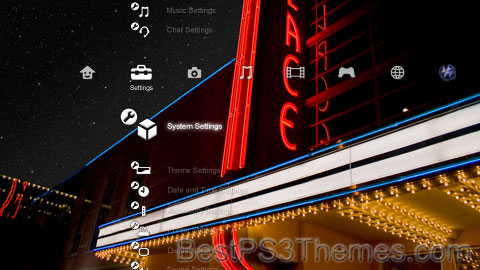
(1 background)
Redirect to:
This page is a redirect. The following categories are used to track and monitor this redirect:- From a synonym: This is a redirect from a semantic synonym of the target page title.
- For example: automobile
 car
car - This template should not be used to tag redirects that are taxonomic synonyms. For taxonomic synonyms use {{R from alternative scientific name}} instead.
- For example: automobile
When appropriate, protection levels are automatically sensed, described and categorized.- From other capitalisation: This is a redirect from a title with another method of capitalisation. It leads to the title in accordance with the Wikipedia naming conventions for capitalisation, or it leads to a title that is associated in some way with the conventional capitalisation of this redirect title. This may help writing, searching and international language issues.
- If this redirect is an incorrect capitalisation, then {{R from miscapitalisation}} should be used instead, and pages that use this link should be updated to link directly to the target. Miscapitalisations can be tagged in any namespace.
- Use this rcat to tag only mainspace redirects; when other capitalisations are in other namespaces, use {{R from modification}} instead.
The Palace Theater
The Palace Theater theme by ShawnM
Download: PalaceTheater.p3t
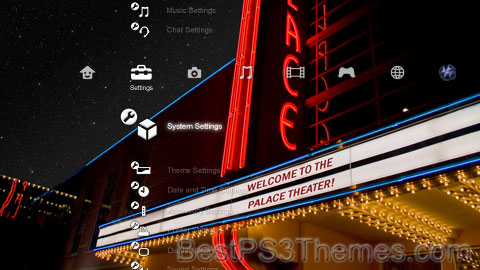
(1 background)
P3T Unpacker v0.12
Copyright (c) 2007. Anoop MenonThis program unpacks Playstation 3 Theme files (.p3t) so that you can touch-up an existing theme to your likings or use a certain wallpaper from it (as many themes have multiple). But remember, if you use content from another theme and release it, be sure to give credit!
Download for Windows: p3textractor.zip
Instructions:
Download p3textractor.zip from above. Extract the files to a folder with a program such as WinZip or WinRAR. Now there are multiple ways to extract the theme.
The first way is to simply open the p3t file with p3textractor.exe. If you don’t know how to do this, right click the p3t file and select Open With. Alternatively, open the p3t file and it will ask you to select a program to open with. Click Browse and find p3textractor.exe from where you previously extracted it to. It will open CMD and extract the theme to extracted.[filename]. After that, all you need to do for any future p3t files is open them and it will extract.
The second way is very simple. Just drag the p3t file to p3textractor.exe. It will open CMD and extract the theme to extracted.[filename].
For the third way, first put the p3t file you want to extract into the same folder as p3textractor.exe. Open CMD and browse to the folder with p3extractor.exe. Enter the following:
p3textractor filename.p3t [destination path]Replace filename with the name of the p3t file, and replace [destination path] with the name of the folder you want the files to be extracted to. A destination path is not required. By default it will extract to extracted.filename.300 #3
300 theme by myownscars
Download: 300_3.p3t
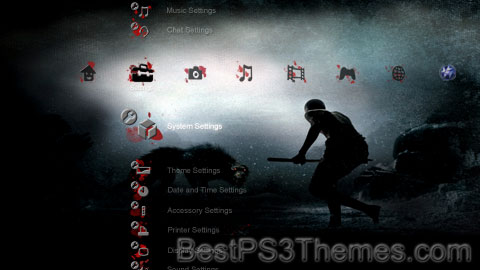
(5 backgrounds)
This article needs additional citations for verification. (April 2019)Millennium: 1st millennium Centuries: Decades: Years: 300 by topic Leaders Categories 300 in various calendars Gregorian calendar 300
CCCAb urbe condita 1053 Assyrian calendar 5050 Balinese saka calendar 221–222 Bengali calendar −293 Berber calendar 1250 Buddhist calendar 844 Burmese calendar −338 Byzantine calendar 5808–5809 Chinese calendar 己未年 (Earth Goat)
2997 or 2790
— to —
庚申年 (Metal Monkey)
2998 or 2791Coptic calendar 16–17 Discordian calendar 1466 Ethiopian calendar 292–293 Hebrew calendar 4060–4061 Hindu calendars - Vikram Samvat 356–357 - Shaka Samvat 221–222 - Kali Yuga 3400–3401 Holocene calendar 10300 Iranian calendar 322 BP – 321 BP Islamic calendar 332 BH – 331 BH Javanese calendar 180–181 Julian calendar 300
CCCKorean calendar 2633 Minguo calendar 1612 before ROC
民前1612年Nanakshahi calendar −1168 Seleucid era 611/612 AG Thai solar calendar 842–843 Tibetan calendar 阴土羊年
(female Earth-Goat)
426 or 45 or −727
— to —
阳金猴年
(male Iron-Monkey)
427 or 46 or −726The world in 300 Year 300 (CCC) was a leap year starting on Monday (link will display the full calendar) of the Julian calendar. At the time, it was known as the Year of the Consulship of Constantius and Valerius (or, less frequently, year 1053 Ab urbe condita). The denomination 300 for this year has been used since the early medieval period, when the Anno Domini calendar era became the prevalent method in Europe for naming years.
Events[edit]
By place[edit]
Roman Empire[edit]
- Emperor Diocletian begins construction of a palace that will become the city of Split (approximate date). Diocletian, who plans on abdicating, intends to use this palace as his place of retirement.
- Caesar Constantius I wins a victory over the Franks (approximate date).
Asia[edit]
- The lion becomes extinct from Armenia (approximate date).
- The Yayoi period ends in Ancient Japan (approximate date).[1]
- Wootz steel is developed in India (approximate date).
- The Kama Sutra, an Indian handbook on the art of sexual love, is probably produced around this time by the sage Vatsyayana.
- Micheon becomes ruler of the Korean kingdom of Goguryeo.[2]
Africa[edit]
- The elephant becomes extinct in North Africa (approximate date).
- The Atlas wild ass becomes extinct (approximate date).
Mesoamerica[edit]
- The Formative/Preclassic period in Mesoamerica comes to an end approximately around this year.
- The Mayan civilization reaches its most prolific period, the classic period, in what is now Guatemala, Belize and parts of southern Mexico adjacent to the former two. During most of this period, Tikal dominates the Mayan world.
By topic[edit]
Art and Science[edit]
- The magnetic compass for navigation is invented in China (approximate date).
- The Panchatantra, a Sanskrit collection of fables and fairy tales, is written in India.
- The Tetrarchs are probably made in Egypt. After 330 they are moved to Constantinople and in 1204 they are installed at the corner of the facade of the St Mark's Basilica, Venice (approximate date).
- Diocletian's Palace, Split, Croatia, is built. Its model is nowadays kept at the Museo della Civilta Romana, Rome.
Religion[edit]
- Peter of Alexandria becomes Patriarch of Alexandria.
- Possible date of the Codex Vaticanus Graecus 1209 and Codex Sinaiticus, manuscripts of the Bible written in Greek.
- Tiridates III makes his kingdom of Armenia the first state to adopt Christianity as its official religion.
- Approximate date of the Synod of Elvira in Elvira, Spain, which prohibits interaction with Jews, pagans, and heretics.
Births[edit]
- Aemilia Hilaria, Gallo-Roman physician (approximate date)
- Flavius Hermogenes, Roman prefect and politician (d. 361)
- Frumentius, Syrian missionary and bishop (approximate date)
- Hilary of Poitiers, Gallo-Roman bishop (approximate date)
- Li Shou, Chinese emperor of the Cheng Han Dynasty (d. 343)
- Macarius of Egypt, Coptic Christian monk and hermit (d. 391)
- Min of Jin, Chinese emperor of the Jin Dynasty (d. 318)
- Zeno of Verona, Christian bishop and martyr (approximate date)
Deaths[edit]
- Jia Mi, Chinese general, official and politician
- Jia Nanfeng, Chinese empress of the Jin Dynasty (b. 257)
- Liu Ling, Chinese scholar and poet (b. 221)
- Lüzhu, Chinese dancer, singer and music teacher
- Pan Yue, Chinese poet and writer (b. 247)
- Pei Wei, Chinese philosopher and politician (b. 267)
- Shi Chong, Chinese politician and statesman (b. 249)
- Sima Yu, Chinese prince of the Jin Dynasty (b. 278)
- Sporus of Nicaea, Greek mathematician (approximate date)
- Zhang Hua, Chinese official, scholar and poet (b. 232)
References[edit]
- ^ Keally, Charles T. (June 3, 2006). "Yayoi Culture". Japanese Archaeology. Charles T. Keally. Retrieved May 10, 2023.
- ^ "List of Rulers of Korea". metmuseum.org. Retrieved April 19, 2019.
Final Fantasy VII #10
Final Fantasy VII theme by myownscars
Download: FinalFantasyVII_10.p3t
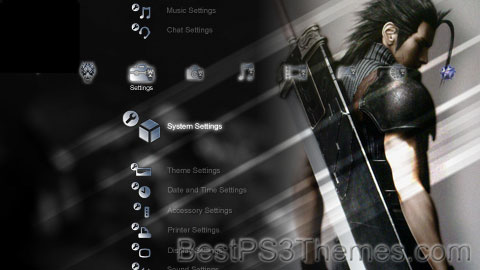
(8 backgrounds)
Final Fantasy VII 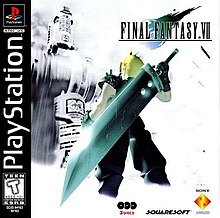 North American cover art, featuring the game's protagonist, Cloud Strife
North American cover art, featuring the game's protagonist, Cloud StrifeDeveloper(s) Square Publisher(s) - PlayStation
- JP: Square
- WW: Sony Computer Entertainment
- Windows
- Eidos Interactive
- Later releases
- Square Enix
Director(s) Yoshinori Kitase Producer(s) Hironobu Sakaguchi Programmer(s) Ken Narita Artist(s) Writer(s) Yoshinori Kitase
Kazushige NojimaComposer(s) Nobuo Uematsu Series Final Fantasy Platform(s) Release January 31, 1997Genre(s) Role-playing Mode(s) Single-player Final Fantasy VII[a] is a 1997 role-playing video game developed by Square for the PlayStation console and the seventh main installment in the Final Fantasy series. Square published the game in Japan, and it was released in other regions by Sony Computer Entertainment, becoming the first game in the main series to have a PAL release. The game's story follows Cloud Strife, a mercenary who joins an eco-terrorist organization to stop a world-controlling megacorporation from using the planet's life essence as an energy source. Ensuing events send Cloud and his allies in pursuit of Sephiroth, a superhuman who seeks to wound the planet and harness its healing power in order to be reborn as a god. Throughout their journey, Cloud bonds with his party members, including Aerith Gainsborough, who holds the secret to saving their world.
Development began in 1994, originally for the Super Nintendo Entertainment System. After delays and technical difficulties from experimenting with several platforms, most notably the Nintendo 64, Square moved production to the PlayStation, largely due to the advantages of the CD-ROM format. Veteran Final Fantasy staff returned, including series creator and producer Hironobu Sakaguchi, director Yoshinori Kitase, and composer Nobuo Uematsu. The title was the first in the series to use full motion video and 3D computer graphics, featuring 3D character models superimposed over 2D pre-rendered backgrounds. Although the gameplay remained mostly unchanged from previous entries, Final Fantasy VII introduced more widespread science fiction elements and a more realistic presentation. The combined development and marketing budget amounted to approximately US$80 million.
Final Fantasy VII received widespread commercial and critical success and remains widely regarded as a landmark title, and it is regarded as one of the greatest and most influential video games ever made. The title won numerous Game of the Year awards and was acknowledged for boosting the sales of the PlayStation and popularizing Japanese role-playing games worldwide. Critics praised its graphics, gameplay, music, and story, although some criticism was directed towards the original English localization. Its success has led to enhanced ports on various platforms, a multimedia subseries called the Compilation of Final Fantasy VII, and a high definition remake trilogy currently comprising Final Fantasy VII Remake (2020), and Final Fantasy VII Rebirth (2024).
Gameplay[edit]
The gameplay of Final Fantasy VII is similar to earlier Final Fantasy titles and Japanese role-playing games.[1] The game features three modes of play: the world map, the field, and the battle screen.[2][3]: 15, 20 At its grandest scale, players explore the world of Final Fantasy VII on a 3D world map.[4] The world map contains representations of areas for the player to enter, including towns, environments, and ruins.[5] Natural barriers—such as mountains, deserts, and bodies of water—block access by foot to some areas; as the game progresses, the player receives vehicles that help traverse these obstacles.[3]: 44 Chocobos can be found in certain spots on the map, and if caught, can be ridden to areas inaccessible on foot or by vehicle.[3]: 46 In field mode, the player navigates fully scaled versions of the areas represented on the world map.[4] VII marks the first time in the series that the mode is represented in a three-dimensional space. In this mode, the player can explore the environment, talk with characters, advance the story, and initiate event games.[3]: 15 Event games are short minigames that use special control functions and are often tied to the story.[3]: 18 While in field mode, the player can also find shops and inns. Shops allow the player to buy and sell items that can aid Cloud and his party, such as weapons, armor, and accessories. Inns restore the hit points and mana points of characters who rest at them and cure abnormalities contracted during battles.[3]: 17

A battle scene with Cloud, Barret, and Tifa facing a dragon. In this given moment, the player must choose a command for Cloud to perform. At random intervals on the world map and in field mode, and at specific moments in the story, the game will enter the battle screen, which places the player characters on one side and the enemies on the other. It employs an "Active Time Battle" (ATB) system, in which the characters exchange moves until one side is defeated.[1][2] The damage or healing dealt by either side is quantified on screen. Characters have several statistics that determine their effectiveness in battle; for example, hit points determine how much damage they can take, and magic determines how much damage they can inflict with spells. Each character on the screen has a time gauge; when a character's gauge is full, the player can input a command for them. The commands change as the game progresses, and are dependent on the characters in the player's party and their equipment. Commands include attacking with a weapon, casting magic, using items, summoning monsters, and other actions that either damage the enemy or aid the player characters. Final Fantasy VII also features powerful, character-specific commands called Limit Breaks, which can be used only after a special gauge is charged by taking enemy attacks. After being attacked, characters can be afflicted by one or more abnormal "statuses", such as poison or paralysis. These statuses and their adverse effects can be removed by special items or abilities or by resting at an inn. Once all enemies are defeated, the battle ends and the player is rewarded with money, items, and experience points. If the player is defeated, it is game over and the game must be loaded to the last save point.[3]: 20–27
When not in battle, the player can use the menu screen, where they can review each character's status and statistics, use items and abilities, change equipment, save the game when on the world map or at a save point, and manage orbs called Materia. Materia are the main method of customizing characters in Final Fantasy VII, and can be added to equipment to provide characters with new magic spells, monsters to summon, commands, statistical upgrades, and other benefits.[6] Materia level up through their own experience point system and can be combined to create different effects.[3]: 30–42
Synopsis[edit]
Setting and characters[edit]
Final Fantasy VII takes place on a world referred to in-game as the "Planet" and retroactively named "Gaia".[7][8] The planet's lifeforce, called the Lifestream, is a flow of spiritual energy that gives life to everything on the Planet; its processed form is known as "Mako".[9] On a societal and technological level, the game has been defined as an industrial or post-industrial science fiction setting.[10] During Final Fantasy VII, the Shinra Electric Power Company, a world-dominating megacorporation headquartered in the city of Midgar, is draining the Planet's Lifestream for energy, weakening the Planet and threatening its existence and all life.[11] Significant factions within the game include AVALANCHE, an eco-terrorist group seeking Shinra's downfall so the Planet can recover;[8] the Turks, a covert branch of Shinra's security forces;[12] SOLDIER, an elite Shinra fighting force created by enhancing humans with Mako;[13] and the Cetra, a near-extinct human tribe which maintains a strong connection to the Planet and the Lifestream.[14]
The main protagonist is Cloud Strife, an aloof mercenary who claims to be a former 1st Class SOLDIER. Early on, he works with two members of AVALANCHE: Barret Wallace, its brazen but fatherly leader; and Tifa Lockhart, a shy yet nurturing martial artist and his childhood friend. During their journey, they meet Aerith Gainsborough, a carefree flower merchant and one of the last surviving Cetra;[14][15] Red XIII, an intelligent quadruped from a tribe that protects the planet;[16] Cait Sith, a fortune-telling robotic cat controlled by repentant Shinra staff member Reeve;[3][17] and Cid Highwind, a pilot whose dream of being the first human in outer space was unrealized.[18] The group can also recruit Yuffie Kisaragi, a young ninja and skilled Materia thief; and Vincent Valentine, a former Turk and victim of Shinra's experiments.[19] The game's main antagonists are Rufus Shinra, the son of President Shinra and the later leader of the Shinra Corporation;[20] Sephiroth, a former SOLDIER who reappears several years after being presumed dead;[3] and Jenova, a hostile extraterrestrial life-form who the Cetra imprisoned 2,000 years ago and who Sephiroth was created from.[21][22][23] A key character in Cloud's backstory is Zack Fair, a member of SOLDIER and Aerith's first love.[24]
Plot[edit]
AVALANCHE destroys a Shinra Mako reactor in Midgar, but an attack on another reactor goes wrong and Cloud falls into the city's slums. There, he meets Aerith and protects her from Shinra.[25][26] Meanwhile, Shinra finds AVALANCHE's base of operations and intentionally collapses part of the upper city level in retaliation for the Mako reactor being destroyed, killing many AVALANCHE members and innocent bystanders as collateral damage.[27] Aerith is also captured since Shinra believes that as a Cetra, she can potentially reveal the "Promised Land", which they believe is overflowing with Lifestream energy they can exploit.[28][29] Cloud, Barret, and Tifa rescue Aerith, and during their escape from Midgar, discover that Sephiroth murdered President Shinra despite being presumed dead five years earlier.[30] The party pursues Sephiroth across the Planet, with now-President Rufus on their trail; they are soon joined by the rest of the playable characters.
At a Cetra temple, Sephiroth reveals he intends to use a powerful magical artifact known as "Black Materia" to cast the spell "Meteor", which would have a devastating impact on the Planet. Sephiroth claims he will absorb the Lifestream as it attempts to heal the wound caused by Meteor, and become a god-like being in the process.[31] The party retrieves the Black Materia, but Sephiroth manipulates Cloud into surrendering it. Aerith departs alone to stop Sephiroth and follows him to an abandoned Cetra city. While Aerith prays to the Planet for help, Sephiroth attempts to force Cloud to kill her; after this fails, he kills her himself before fleeing, leaving the White Materia behind.[32] The party then learns of Jenova, a hostile alien lifeform who landed on the Planet two thousand years prior to the game's events. Upon arrival on the Planet, Jenova began infecting the Cetra with a virus, and they were nearly wiped out. However, a small group managed to seal away Jenova in a tomb, which Shinra later unearthed. At Nibelheim, Jenova's cells were used in experiments which led to the creation of Sephiroth.[21][32] Five years before the game's events, Sephiroth and Cloud visited Nibelheim, where Sephiroth learned of his origins and was driven insane as a result. He murdered the townspeople, and then vanished after Cloud confronted him.
At the Northern Crater, the party learns that the "Sephiroths" they have encountered are Jenova clones who the insane Shinra scientist Hojo created. Cloud confronts the real Sephiroth as he is killing his clones to reunite Jenova's cells, but is again manipulated into giving him the Black Materia. Sephiroth then taunts Cloud by showing another SOLDIER in his place in his memories of Nibelheim, suggesting that Cloud is a failed clone of Sephiroth.[33] Sephiroth summons Meteor and seals the Crater as Cloud falls into the Lifestream and Rufus captures the party.
After escaping Shinra, the party discovers Cloud at an island hospital in a catatonic state from Mako poisoning, and Tifa decides to stay as his caretaker. When a planetary defense force called Weapon attacks the island, the two fall into the Lifestream,[34] where Tifa helps Cloud reconstruct his memories. Cloud was a mere infantryman who was never accepted into SOLDIER; the SOLDIER in his memories was his friend Zack. At Nibelheim, Cloud ambushed and wounded Sephiroth after the latter's mental breakdown, but Jenova preserved Sephiroth's life. Hojo experimented on Cloud and Zack for four years, injecting them with Jenova's cells and Mako. They managed to escape, but Zack was killed in the process. The trauma of these events triggered an identity crisis in Cloud, and he constructed a false persona based around Zack's stories and his own fantasies.[32][35] Cloud accepts his past and reunites with the party, who learn that Aerith's prayer to the Planet had been successful: the Planet had attempted to summon Holy to prevent Meteor's impact, but Sephiroth prevented it from having any effect.
Shinra fails to destroy Meteor, but manages to defeat a Weapon and puncture the Northern Crater, seemingly killing Rufus and several other personnel. After killing Hojo, who is revealed to be Sephiroth's biological father,[21] the party descends to the Planet's core through the opening in the Northern Crater and defeats both Jenova and Sephiroth. The party escapes and Holy is summoned once again, destroying Meteor with help from the Lifestream.[36] Five hundred years later, Red XIII is seen with two cubs looking out over the ruins of Midgar, which are now covered in greenery, showing that the planet has healed.
Development[edit]
Producer Hironobu Sakaguchi and director Yoshinori Kitase, who together helped create the story and gameplay concepts for Final Fantasy VII.Initial concept talks for Final Fantasy VII began in 1994 at Square studio, following the completion of Final Fantasy VI. As with the previous installment, series creator Hironobu Sakaguchi reduced his role to producer and granted others a more active role in development: these included Yoshinori Kitase, one of the directors of FFVI. The next installment was planned as a 2D game for Nintendo's Super Nintendo Entertainment System (Super NES). After creating an early 2D prototype of it, the team postponed development to help finish Chrono Trigger.[37] Once Chrono Trigger was completed, the team resumed discussions for Final Fantasy VII in 1995.[37][38]
The team discussed continuing the 2D strategy, which would have been the safe and immediate path just prior to the imminent industry shift toward 3D gaming; such a change would require radical new development models.[37] The team decided to take the riskier option and make a 3D game on new generation hardware but had yet to choose between the cartridge-based Nintendo 64 or the CD-ROM-based PlayStation from Sony Computer Entertainment.[37] The team also considered the Sega Saturn console and Microsoft Windows.[39] Their decision was influenced by two factors: a highly successful tech demo based on Final Fantasy VI using the new Softimage 3D software, and the escalating price of cartridge-based games, which was limiting Square's audience.[37][40][41] Tests were made for a Nintendo 64 version, which would use the planned 64DD peripheral despite the lack of 64DD development kits and the prototype device's changing hardware specifications. This version was discarded during early testing, as the 2000 polygons needed to render the Behemoth monster placed excessive strain on the Nintendo 64 hardware, causing a low frame rate.[37] It would have required an estimated thirty 64DD discs to run Final Fantasy VII properly with the data compression methods of the day.[42] Faced with both technical and economic issues on Nintendo's current hardware, and impressed by the increased storage capacity of CD-ROM when compared to the Nintendo 64 cartridge, Square shifted development of Final Fantasy VII, and all other planned projects, onto the PlayStation.[37]
In contrast to the visuals and audio, the overall gameplay system remained mostly unchanged from Final Fantasy V and VI, but with an emphasis on player control.[43] The initial decision was for battles to feature shifting camera angles. Battle arenas had a lower polygon count than field areas, which made creating distinctive features more difficult.[40] The summon sequences benefited strongly from the switch to the cinematic style, as the team had struggled to portray their scale using 2D graphics.[44] In his role as producer, Sakaguchi placed much of his effort into developing the battle system.[24] He proposed the Materia system as a way to provide more character customization than previous Final Fantasy games: battles no longer revolved around characters with innate skills and roles in battle, as Materia could be reconfigured between battles.[40] Artist Tetsuya Nomura also contributed to the gameplay; he designed the Limit Break system as an evolution of the Desperation Attacks used in Final Fantasy VI. The Limit Breaks served a purpose in gameplay while also evoking each character's personality in battle.[24][40]
Square retained the passion-based game development approach from their earlier projects, but now had the resources and ambition to create the game they wanted. This was because they had extensive capital from their earlier commercial successes, which meant they could focus on quality and scale rather than obsessing over and working around their budget.[37] Final Fantasy VII was at the time one of the most expensive video game projects ever, costing an estimated US$40 million, which adjusted for inflation came to $61 million in 2017.[37][45][46] Development of the final version took a staff of between 100 and 150 people just over a year to complete. As video game development teams were usually only 20 people, the game had what was described as the largest development team of any game up to that point.[37][44] The development team was split between both Square's Japanese offices and its new American office in Los Angeles; the American team worked primarily on city backgrounds.[42]
Art design[edit]
Promotional artwork of the main cast. The main characters were designed by Tetsuya Nomura; Final Fantasy VII was his first role as character designer.[24][37] The game's art director was Yusuke Naora, who had previously worked as a designer for Final Fantasy VI. With the switch into 3D, Naora realized that he needed to relearn drawing, as 3D visuals require a very different approach than 2D. With the massive scale and scope of the project, Naora was granted a team devoted entirely to the game's visual design. The department's duties included illustration, modeling of 3D characters, texturing, the creation of environments, visual effects, and animation.[47] The Shinra logo, which incorporated a kanji symbol, was drawn by Naora personally.[48] Promotional artwork, in addition to the logo artwork, was created by Yoshitaka Amano, an artist whose association with the series went back to its inception.[49] While he had taken a prominent role in earlier entries, Amano was unable to do so for Final Fantasy VII, due to commitments at overseas exhibitions.[8][49] His logo artwork was based on Meteor: when he saw images of Meteor, he was not sure how to turn it into suitable artwork. In the end, he created multiple variations of the image and asked staff to choose which they preferred.[50] The green coloring represents the predominant lighting in Midgar and the color of the Lifestream, while the blue reflected the ecological themes present in the story. Its coloring directly influenced the general coloring of the game's environments.[47]
Another prominent artist was Nomura. Having impressed Sakaguchi with his proposed ideas, which were handwritten and illustrated rather than simply typed on a PC, Nomura was brought on as main character designer.[24] Nomura stated that when he was brought on, the main scenario had not been completed, but he "went along like, 'I guess first off you need a hero and a heroine', and from there drew the designs while thinking up details about the characters. After [he'd] done the hero and heroine, [he] carried on drawing by thinking what kind of characters would be interesting to have. When [he] handed over the designs [he'd] tell people the character details [he'd] thought up, or write them down on a separate sheet of paper".[51] Something that could not be carried over from earlier titles was the chibi sprite art, as that would not fit with the new graphical direction. Naora, in his role as an assistant character designer and art director, helped adjust each character's appearance so the actions they performed were believable. When designing Cloud and Sephiroth, Nomura was influenced by his view of their rivalry mirroring the legendary animosity between Miyamoto Musashi and Sasaki Kojirō, with Cloud and Sephiroth being Musashi and Kojirō respectively. Sephiroth's look was defined as "kakkoii", a Japanese term combining good looks with coolness.[40] Several of Nomura's designs evolved substantially during development. Cloud's original design of slicked-back black hair with no spikes was intended to save polygons and contrast with Sephiroth's long, flowing silver hair. However, Nomura feared that such masculinity could prove unpopular with fans, so he redesigned Cloud to feature a shock of spiky, bright blond hair. Vincent's occupation changed from researcher to detective to chemist, and finally to a former Turk with a tragic past.[8][24]
Scenario[edit]
Sakaguchi was responsible for writing the initial plot, which was quite different from the final version.[52] In this draft for the planned SNES version, the game's setting was envisioned as New York City in 1999. Similar to the final story, the main characters were part of an organization trying to destroy Mako reactors, but they were pursued by a hot-blooded detective named Joe. The main characters would eventually blow up the city. An early version of the Lifestream concept was present at this stage.[37][41][52] According to Sakaguchi, his mother had died while Final Fantasy III was being developed, and choosing life as a theme helped him cope with her passing in a rational and analytical manner.[44] Square eventually used the New York setting in Parasite Eve (1998).[41] While the planned concept was dropped, Final Fantasy VII still marked a drastic shift in setting from previous entries, dropping the Medieval fantasy elements in favor of a world that was "ambiguously futuristic".[53]
Brewers
Null
Droplets
Droplets theme by Rainstorm81
Download: Droplets.p3t
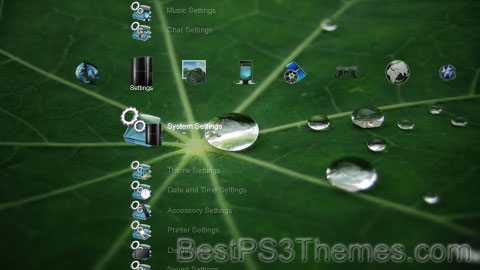
(16 backgrounds)
Redirect to:
This page is a redirect. The following categories are used to track and monitor this redirect:When appropriate, protection levels are automatically sensed, described and categorized.- From the plural form: This is a redirect from a plural noun to its singular form.
- This redirect link is used for convenience; it is often preferable to add the plural directly after the link (for example,
[[link]]s). However, do not replace these redirected links with a simpler link unless the page is updated for another reason (see WP:NOTBROKEN). - Use this rcat to tag only mainspace redirects; when plural forms are found in other namespaces, use {{R from modification}} instead.
- This redirect link is used for convenience; it is often preferable to add the plural directly after the link (for example,
Crazy




